Welcome to the first part in a series of interviews with creative artists, bloggers and podcasters from the Superman and Superfamily fandom community called Superfans in the Fortress.
In this first interview, I talked to Maxwell Yezpitelok who runs a blog on Tumblr called Superman ’86 to ’99 where he reviews and comments on every single Superman comic starting from John Byrne’s Man of Steel until 1999. But why 1999? Well, it’s because during this time period the creative teams on the Superman books remained unchanged with the books constantly intersecting with one another. There were 4 books being published a month – that’s one Superman book a week!
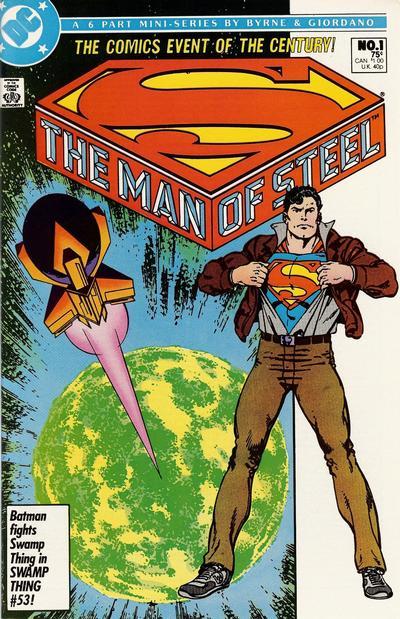
The Man of Steel #1 (October 1986). The issue that started it all.
This was the time of Maggie Sawyer, Professor Hamilton, Lois Lane and Clark Kent’s marriage and most famously, The Death and Return of Superman. This was also the time period that gave us Cyborg Superman, Steel, Superboy and it was the era that changed Lex Luthor from a mad scientist to a billionaire criminal mastermind.
I was always a fan of this era in Superman history, but after reading Maxwell’s blog, I’ve gained a serious appreciation for these comics and just how well-constructed all the plot lines and characters are. And I’m sure fans of Superman: The Animated Series will no doubt enjoy this era of comics and Maxwell’s blog.
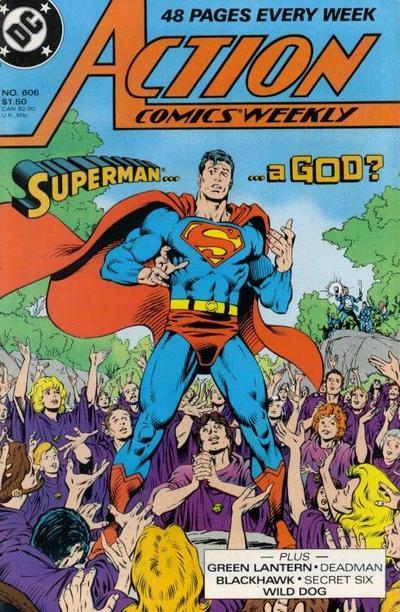
Action Comics Weekly #601-641
You started the blog in July 2013. How did you come up with the idea for it?
When I was unemployed I used to write reviews for Comics Bulletin in order to feel like a productive member of society, but I realized pretty soon I kinda suck at reviewing things. So, just to do something else at the site, I proposed a column called “The Full Run” where I’d read or re-read an entire comic book series and briefly comment on each issue. I stopped writing for CB when I got a paying job, but the idea of starting a Tumblr where I’d do the same thing sorta stuck in my head until I just had to do it.
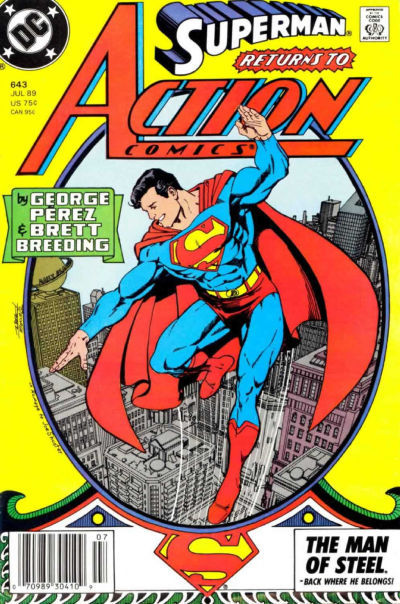
Action Comics #643 (July 1989)
Why did you choose 1986-1999 specifically? What is it about this period in Superman history that made you want to write about it?
Two reasons: the first is that I love the way the Superman writers and editors of this era managed to connect all their stories over such a long period of time. Some subplots took years and literally hundreds of comics to develop, but they always paid off in the end, which was very satisfying. At the same time, every issue or most issues had a clear point to them (as opposed to, say, those X-Men issues where you just get an arbitrary chunk of story with a cliffhanger thrown in at the end). So, you had great individual stories that advanced a great overall narrative. That’s harder to find in comics than it should be.
The other reason is that I bought a whole bunch of Superman comics a few years ago to complete my 86-to-99 run (I had some pretty big gaps in my collection), and doing this is a good excuse to re-read the entire thing and justify the purchase.
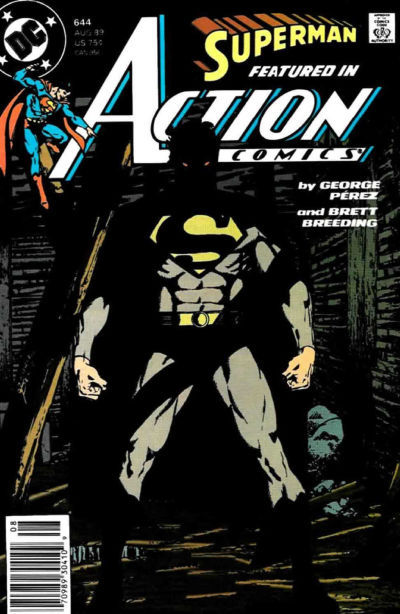
Action Comics #644 (August 1989) Superman vs. Supergirl
It seems like that is the case. For example, Hank Henshaw apparently appeared pretty early in 1987-1988 and then he later became Cyborg Superman in 1994 or something. How do you think the development played out in this era? What did the writers lead up to? Can you give me any examples of major stuff?
Honestly, sometimes they were just pulling stuff out of their asses. Take the Hank Henshaw/Cyborg thing: that came about because in 1987, John Byrne wrote an issue where Superman’s Kryptonian rocket was left suspended in space. He literally left it hanging there and forgot about it. Readers kept asking what the hell happened with that, so in 1989/1990 Dan Jurgens came up with the Hank Henshaw plot, just as a way to work the rocket back into the story. Then in 1993 they needed a villain for Reign of the Supermen so they used Hank (which led to Emerald Twilight, which led to Zero Hour, etc.). When you read Hank’s story you’re tempted to think they planned the whole thing from 1987, but it was all completely accidental.
Superman #17 (May 1988)
On the other hand, other plots were prepared with an almost frightening amount of detail: in 1988 they decided they needed to reboot Brainiac to make him more badass, so they slowly planted the seeds for the storyline that gave him a new body a year later. That worked out pretty well, so they planned an even more ambitious storyline to do the same thing for Luthor, which played out all the way through to 1994. That’s like a five year storyline. I think that combination of careful planning and improvisation is a big reason why this era rocks so much.
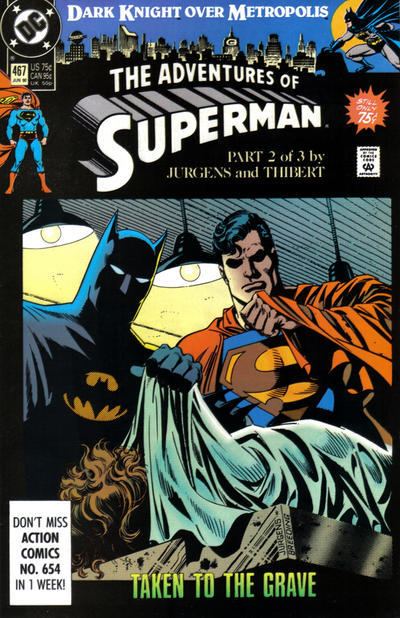
Adventures of Superman #467 (June 1990) “Dark Knight Over Metropolis”
What does Superman mean to you? What makes him so unique and worthwhile that you would undertake this (admittedly daunting) task in his name?
I’m a pretty big fan, as evidenced by all the Supermen in my room: I have a mini statue of the 1940’s Superman standing proud, a way bigger one of the 1960’s Superman looking invincible, and a battle-worn Superman action figure from the ’90s (mullet included). I think those three things perfectly represent three different aspects of the character: the proud social crusader, the larger than life cosmic adventurer, and the more vulnerable and humanized Superman of the era we’re covering. (I also have a poseable Superman bust that came on top of a soft drink, but I’m not sure what that represents. The pop culture icon?) It’s pretty impressive that one character can withstand so many readings and interpretations, and yet they’re all valid and positive. I also like that he can shoot lasers from his eyes and punch things hard.
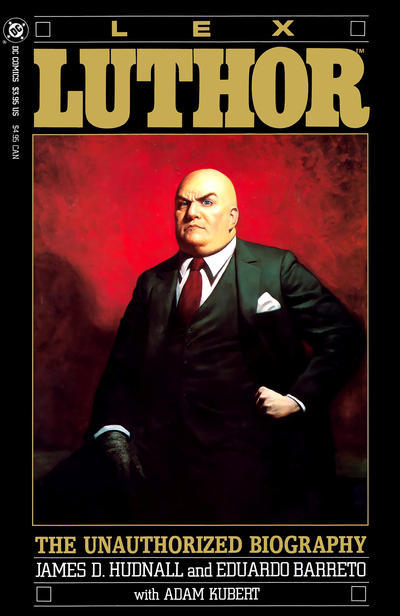
One thing that makes the Superman franchise really fun and great is the supporting cast. So what is special about the supporting cast in this time period and how different and similar is it from contemporary Superman comics?
The supporting cast is actually one of the things that sets this era apart from the others, since they took the time to populate the books with interesting and varied characters like Maggie Sawyer, Jose Delgado, Professor Hamilton and Bibbo. One of the great things about having four monthly Superman books is that they could really take the time to develop these characters into well-rounded people: we’ve already seen Cat Grant evolve from a flirty drunk to a more responsible person. Say what you will about ’90s comics, but no other era did supporting casts better. From what I’ve heard, the Superman supporting cast right now is just “Lois”, which is a shame.
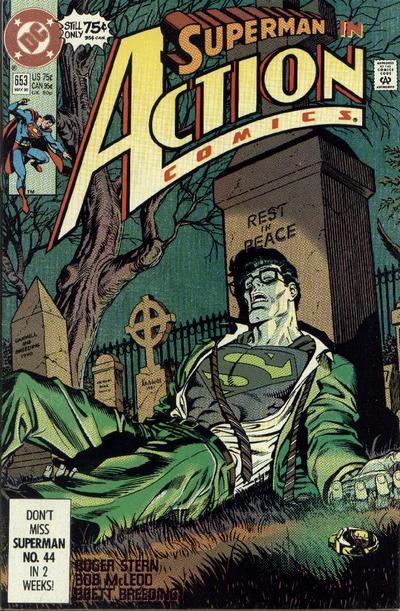
Action Comics #653 (May 1990)
I’m a huge fan of Maggie Sawyer and Professor Hamilton. How important was the supporting cast to these stories? Did they have their own stories or were they just living in the world of Superman?
They weren’t absolutely essential to the stories, but the stories wouldn’t be the same without them. Like, the entire Eradicator storyline could have been told with nameless S.T.A.R. Labs scientists explaining stuff to Superman instead of using Professor Hamilton in all the issues, but I just love how exasperated Hamilton gets with Superman for being so irresponsible with the junk he brings from outer space, or that he felt compelled to clean Superman’s mess and just made it worse. Or on Maggie Sawyer’s case, in most of her appearances they could have used a random cop fighting the villain before Superman arrives, but since we know her well, we actually give a crap whether she gets hurt or not. Stuff like that was important to the tone of the stories.
Also, it’s cool that all the supporting characters, no matter how small, got their chance to shine. One of my favorite moments is a scene from the Death/Return of Superman saga with Bibbo praying. Most of the time he was just a funny tough guy, but little moments like that made you feel like the characters were real people.
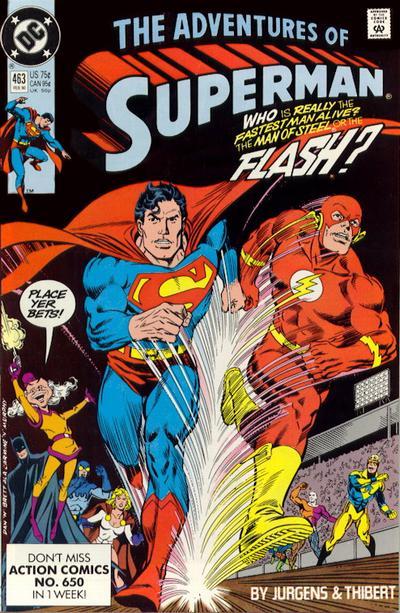
Adventures of Superman #463 (February 1990)
I really enjoy your snark and commentary. The snarkiness seems to come naturally to you. Do you think that Superman and crew can be comedic in nature?
Oh, yeah. Especially when written by Jerry Ordway or Karl Kesel. Another great thing about this period is that they had dozens of in-jokes and recurring gags through the years, so humor was a big part of the Superman titles. In fact, as soon as they stopped having funny moments, the serious ones didn’t seem to matter as much anymore.
One of my goals for this Tumblr is to keep track of all the recurring jokes and how they evolved, since to my knowledge this is a task no one has done before. However, I’ve actually left out all the comical little shout outs to each other that the creators slipped into the comic, because I’d never finish otherwise (my favorite was “The Great Carlini’s House of Couches”, in honor of Mike Carlin).
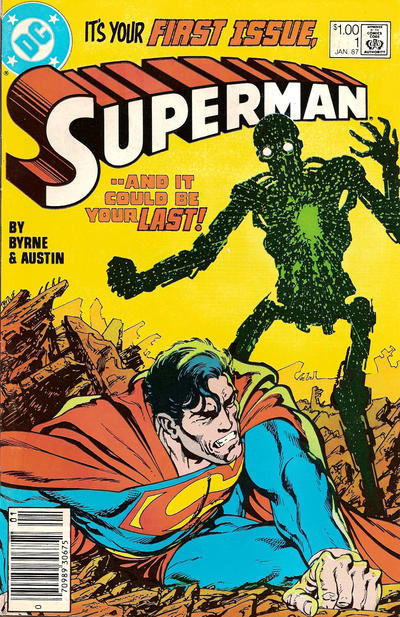
Superman #1 (January 1987)
I noticed you keeping track of those running jokes. Can you elaborate more on the comedy aspects of the books?
One thing I like is the atmosphere at the Daily Planet, where these completely random characters are showing ribbing on Lois or Clark like they’ve been the best of friends forever. It’s like “Oh that Albert! Such a joker!” Who’s Albert? No idea. He never appeared again. But I love those scenes because they make Clark Kent look like he’s really part of the gang, so you buy that this invincible alien would actually want to work there.
I kinda think the atmosphere at the Superman office during that time must have been similar. You could tell they were having fun doing the books. I mean, they didn’t do Bibbo storylines because the market demanded it or because the president of WB called them to say “Gotta have more Bibbo!” but simply because they liked adding fun stuff and cracking each other up. And, again, once it stopped feeling like they were having fun the comics stopped being good.
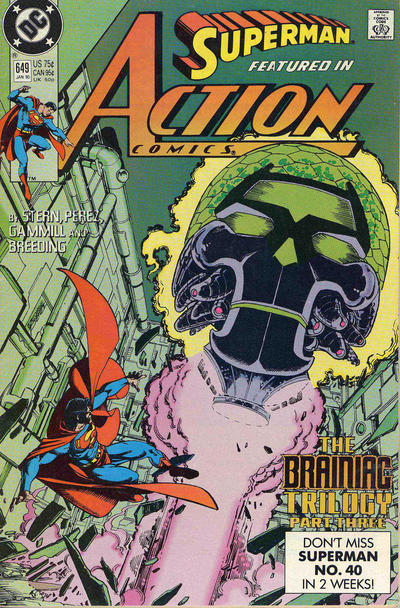
Action Comics #649 (January 1990) The Brainiac Trilogy
Is Superman 86-99 your only project or do you have any others?
Lots, but the one I’d like to pimp right now is the webcomic I write, ACK. Check it out! http://ackwebcomic.com
What character and time period would you tackle next?
So many options. I have a full, ten year run of Peter David’s Hulk sitting on a shelf, mostly unread, that I’d love to tackle after I’m done with Superman. Another possibility would be Mike Grell’s definitive Green Arrow run, since that character is all the rage on Tumblr right now. Or maybe Karl Kesel’s Superboy, though it might make more sense to read that at the same time as the Super-titles. Basically, I’m just gonna use Tumblr to motivate myself to open all the comics I’ve bought and haven’t gotten around to reading. There’s still plenty of Superman left before we get there, though.
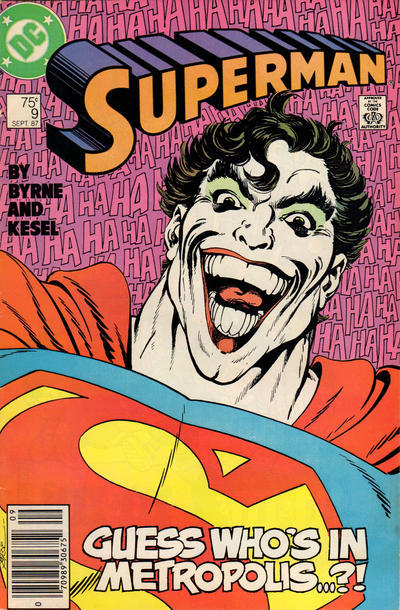
Superman #9 (September 1987)
You can contact Maxwell at the following:


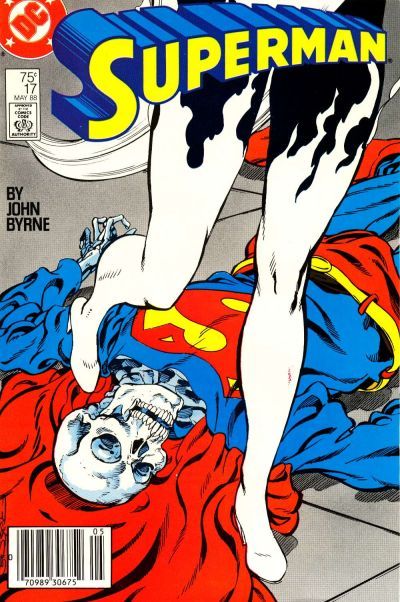

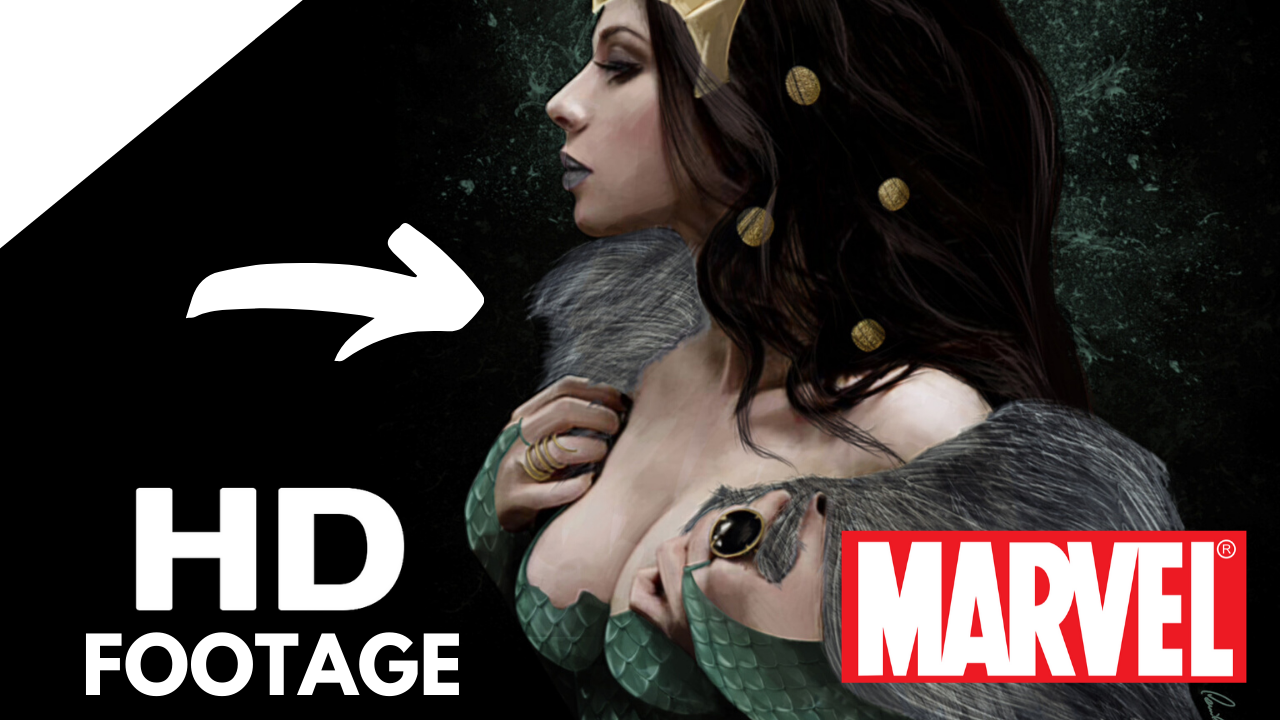





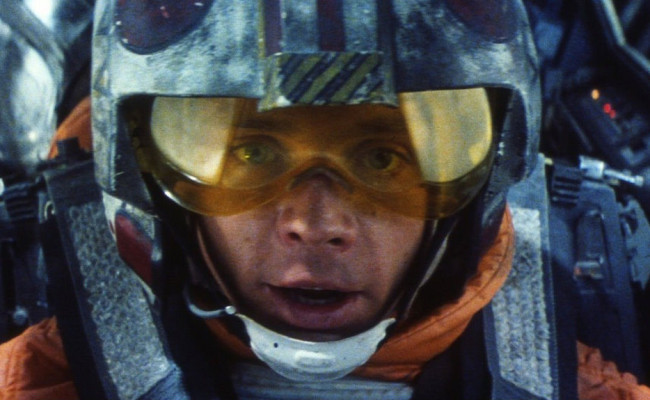
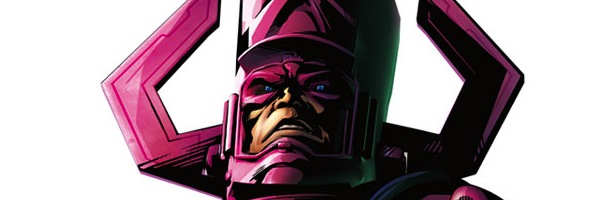

S#!T Talking Central